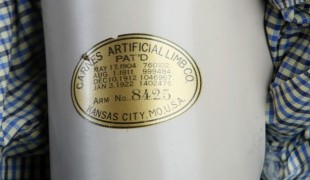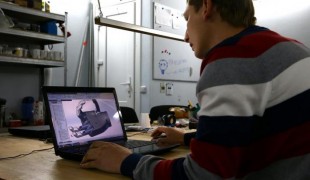- 3104
- 257
- 9
- 9
- 0
- Help Ukraine
About the solution
The robotic hand SoftHand Pro, could be described with three adjective: soft, intuitive and robust.
Soft because Unlike other prosthetic hands on the market that feature rigid phalanges, the SoftHand Pro (SHP) is designed with soft joints that resemble our own fingers. This remarkable feature allows the hand to adapt to the shape of various objects. Instead of forcing objects to conform to the hand, the hand interacts with the environment in a compliant manner. This behavior extends beyond object manipulation and spills over into interactions with other people and even with oneself.
Users who have tested our device have expressed how natural it feels to touch their own face or healthy arm with the SHP—an action they had never experienced with their previous prostheses. This sense of embodiment indicates that the hand is perceived as an integral part of oneself, enhancing interactions with others without the fear of causing discomfort (e.g., a handshake that's too firm). It's a game-changer in terms of connecting with the world around us.
The second adjective, "intuitive," perfectly describes the SHP's user interface. Unlike many prosthetic hands out there, our hand is underactuated, meaning it is controlled by a single motor that governs the movement of all fingers. This design minimizes the cognitive effort required to close the hand. Combined with the soft phalanges, this feature allows for reliable grasping of objects with diverse shapes. Plus, having just one actuator enables us to keep production costs down, making the product accessible to a wider audience.
Finally, the robustness. Despite its name, the SoftHand is far from fragile. It can handle a maximum weight of 50 kg, making it suitable for the demands of everyday life, such as carrying grocery bags or other daily tasks that require strength. It's a resilient companion that won't let you down when you need it most.
The journey to the current version of the SoftHand Pro has been a culmination of decades of research, encompassing geometric and neuroscientific perspectives, as well as extensive testing and clinical trials conducted at various institutions worldwide. User feedback has played a crucial role in improving the hand's dimensions, weight, and aesthetics. We started with a hand designed for robots and evolved it into the user-centered version it is today. We can proudly say that it's a hand created by users, for users.
Our dream was to develop a device that is sturdy, user-friendly, and accessible to all, while keeping costs low. With the SoftHand Pro, we believe we've taken a significant step towards realizing that dream. It's a remarkable innovation that paves the way for a future where prosthetic technology truly enhances lives.
This solution shall not include mention to the use of drugs, chemicals or biologicals (including food); invasive devices; offensive, commercial or inherently dangerous content. This solution was not medically validated. Proceed with caution! If you have any doubts, please consult with a health professional.
-
-
324
-
0
-
4331

Amputee creates prosthetic arm for himself
(SELF)-CARE: EATING: Eating independently.
(SELF)-CARE: DRINKING: Drinking independently.
Grip
Limb Amputation
Prosthesis
Assistive Daily Life Device (to help ADL)
Muscle weakness
Limited range of motion
Reduced grip force (grip)
Loss of muscle coordination
Restoring mobility
Replacing lost limbs
Promoting self-management
Orthopedics
Australia
-
-
-
482
-
0
-
6675

Father develops 3D printing prosthetic arm for his son
-
-
-
561
-
0
-
8163

Man develops prosthetic arm for his father
-
 en
en